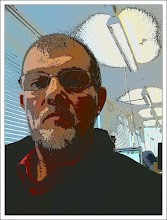 Tuileries
Tuileries Concorde
Concorde  Assemblée Nationale
Assemblée Nationale


Cluny la Sorbonne
Stations are often named after a square or a street, which, in turn, is named for something (or someone) else. A number of stations, such as Avron or Vaugirard, are named after Paris neighborhoods (though not necessarily located in them), whose names, in turn, usually go back to former villages or hamlets that have long since been incorporated into the city of Paris.
The use of double names, such as Reuilly - Diderot or Strasbourg — Saint-Denis, often goes back to two (or more) stations on separate lines that were originally named independently and became associated as interchange stations. For example, the station Marcadet - Poissoniers is an interchange station consisting of the original Marcadet on Line 4 and the original Poissonniers on Line 12. In many instances, however, the practice of double naming was extended to other stations, usually because these stations are located at the intersection of streets carrying these names. Examples include Alma - Marceau and Faidherbe - Chaligny.
Many stations have been renamed during the last century. There have been periods of history during which a significant number of stations were renamed. For example, once Germany declared war on France in 1914, it was decided to rename Berlin as Liège and Allemagne (French for "Germany") as Jaurès. The period during which the most stations were renamed was undoubtedly the post-World War II period. To name a few, Marboeuf at the center of the Champs-Elysées was renamed Franklin D. Roosevelt in 1946 and Aubervilliers-Villette was renamed Stalingrad the same year.
The RER-Métro hub at Châtelet - Les Halles is the largest underground subway station in the world.
Benjamin Sutherland
Newsweek International
March 19, 2007 issue - Even in a country that's long prided itself on its trains, the Paris Métro stands out. It's fast, easy to navigate, clean, inexpensive and, with 16 lines serving 297 stations, remarkably dense—leading many transport experts to consider it the world's premier metro. Since the first few lines entered service at the turn of the 20th century, the Métro has grown into a 218-kilometer network that carries 1.36 billion passengers a year. A train sweeps through the 25 stations of Ligne 1, the city's busiest, every 105 seconds. Paris's Métro authority, the RATP, is apparently not satisfied. Last summer it began an ambitious effort to slice 20 seconds off train headway time and increase rolling speed. It plans to do it by automating the entire line—eliminating drivers and replacing them with computers.
Newsweek International
March 19, 2007 issue - Even in a country that's long prided itself on its trains, the Paris Métro stands out. It's fast, easy to navigate, clean, inexpensive and, with 16 lines serving 297 stations, remarkably dense—leading many transport experts to consider it the world's premier metro. Since the first few lines entered service at the turn of the 20th century, the Métro has grown into a 218-kilometer network that carries 1.36 billion passengers a year. A train sweeps through the 25 stations of Ligne 1, the city's busiest, every 105 seconds. Paris's Métro authority, the RATP, is apparently not satisfied. Last summer it began an ambitious effort to slice 20 seconds off train headway time and increase rolling speed. It plans to do it by automating the entire line—eliminating drivers and replacing them with computers.
RATP officials are convinced that people will get used to the driverless systems. For one thing, they may be safer. Since automated trains always stop at the same spot, the RATP will be able to install high glass façades on platform edges to keep passengers from stumbling or being pushed onto the tracks. The façades will also keep fleeing thieves, graffiti artists and homeless people from entering tunnels, and is expected to reduce suicides: about 60 people throw themselves onto the tracks each year. That was a key point in persuading drivers and their union to accept the renovation project—and help keep Paris in the lead.


